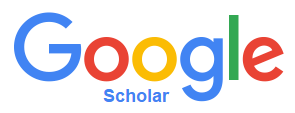Perception about E-Cigarettes in Malaysia: Sociodemographic Correlates
Abstract
Introduction: The prevalence of e-cigarette smoking is increasing. Many people still have a poor understanding of the risks of e-cigarettes. The purpose of this study is to examine sociodemographic factors associated with knowledge about e-cigarettes with a focus on the perception that e-cigarettes are less dangerous than regular cigarettes.
Methods: Multivariable logistic regressions are utilised to estimate the effects of sociodemographic factors on the likelihood of having the perception that e-cigarettes are less dangerous than regular cigarettes. These regressions are stratified by ethnic groups. A Malaysian nationwide survey that consists of a large sample size (n = 4176) is used for secondary analysis.
Results: Age, gender and educational level are associated with the perception about e-cigarettes. Older individuals are less likely to think that e-cigarettes are less dangerous than regular cigarettes compared with younger individuals. Males are more likely to have the perception that e-cigarettes are less dangerous than regular cigarettes relative to females. Having primary or secondary educational level rather than tertiary educational level is associated with a reduced likelihood of having the perception that e-cigarettes are less dangerous than regular cigarettes.
Conclusions: Sociodemographic factors play an important role in determining the perception about e-cigarettes. Nationwide policies directed toward improving knowledge about e-cigarettes among individuals who think that e-cigarettes are less dangerous than regular cigarettes may be effective in lowering the risk of suffering from the currently unknown long-term negative effect of e-cigarettes.
Published
How to Cite
Issue
Section
License
IJPHR applies the Creative Commons Attribution (CC BY) license to articles and other works we publish. If you submit your paper for publication by IJPHR, you agree to have the CC BY license applied to your work. Under this Open Access license, you as the author agree that anyone can reuse your article in whole or part for any purpose, for free, even for commercial purposes. Anyone may copy, distribute, or reuse the content as long as the author and original source are properly cited. This facilitates freedom in re-use and also ensures that IJPHR content can be mined without barriers for the needs of research.






